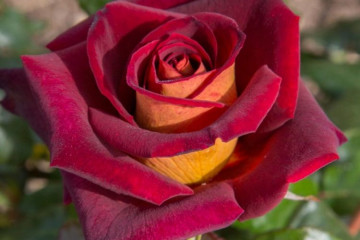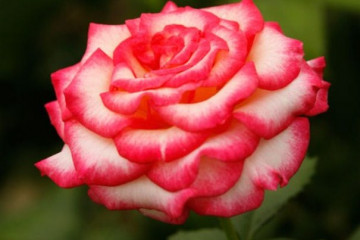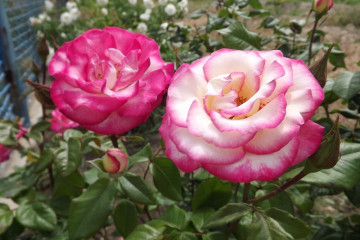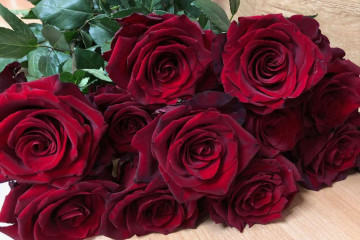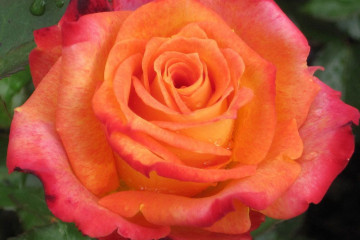Rose Adelaide Hoodless
Content:
Adelaide Hoodless takes root even in harsh climates. Such a flower is suitable for lovers of beautiful flower beds and greenhouses in the northern regions.
Rose Adelaide Hoodless - what kind of variety, history of creation
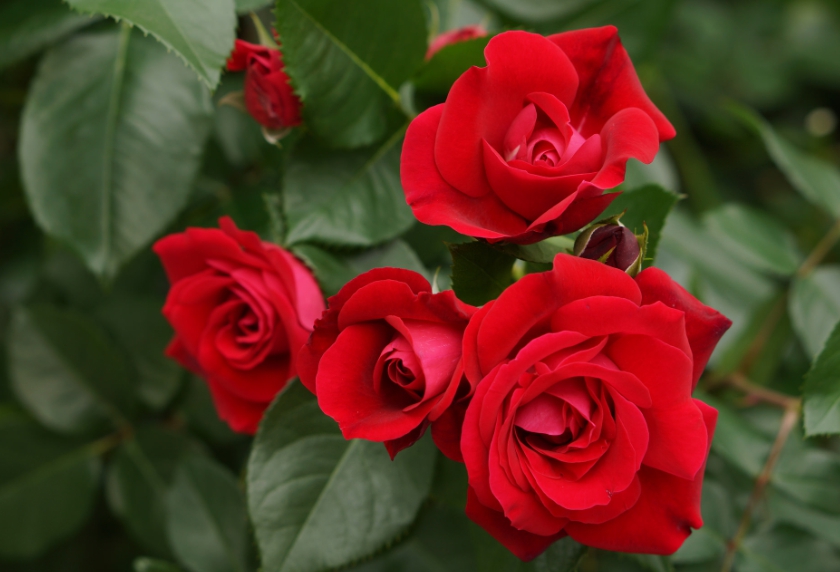
The variety was created specifically for the northern climate
The birthplace of the flower is Canada. The culture was bred in 1976 specifically for the conditions of the harsh Canadian winters.
Brief description, characteristic
Adelaide Hoodless flowers are red with a raspberry tinge. Each brush contains about 15 inflorescences. The diameter of each flower is 6-7 cm. There are many green shiny leaves on the bush. In order for the plant to be comfortable during the growth period, it is necessary to install a support near the shrub. The shrub reaches a height of 150-200 cm. The Canadian rose Adelaide Hoodless produces buds several times, almost continuously during the season.

The bush has many green leaves with shine and red-crimson buds
Pros and cons of culture
One of the main advantages of a flower is its resistance to high temperature conditions. It is allowed not to wrap the shrub during the wintering period: it is enough to huddle in the last month of autumn. Falling snow will help warm the plant.
Rosa Adelaide Hoodless is unpretentious, she needs minimal care. The Canadian variety is quite resistant to diseases, tolerates cold and sultry heat well.
Application in landscape design
Rose Adelaide Hoodless is often used when decorating plots. A tall, beautiful bush blooms profusely and goes well with other types of plants, especially undersized ones. This flower can be used to decorate flower beds, personal plots, gazebos, arches.
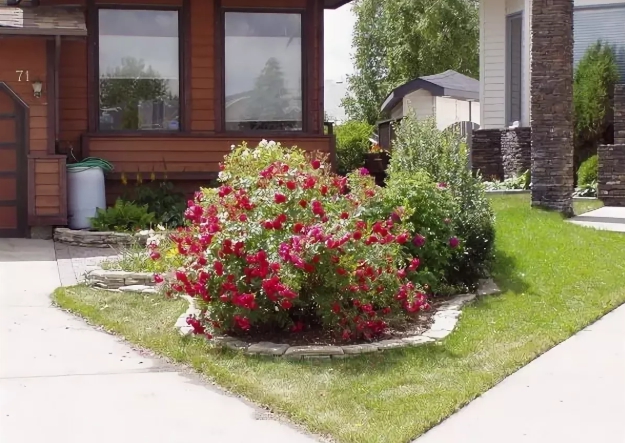
A wide, abundantly flowering shrub will decorate any area
Growing a flower, how to plant it in open ground
In order for the rose to take over and delight others with abundant flowering, a number of actions should be performed to properly plant the culture.
In what form is the landing
It is allowed to plant roses with seeds, but if they even sprout, then the shrub will be deprived of maternal data and most likely will not bloom. The best method is using seedlings.
What time is the procedure implemented
Experienced flower growers recommend planting a rose in the last days of April - the first days of May. It is permissible to perform manipulations in the fall, so that the plant has time to put down roots before the onset of winter.
Choosing a landing site
The seedling needs sunlight and air.
How to prepare the soil and culture for the procedure
On the eve of the procedure, you need to trim the roots and put them in water for 1 day.At the same time, a hole should be dug in the proposed landing site, the depth and diameter of which should be at least 50 cm.Then a layer of fertilizer based on compost and humus should be placed on the bottom of the depression, the soil should be covered with a second layer and filled with a small amount of water.
Planting procedure step by step
To plant a crop correctly, you will need to follow these steps:
- Place the seedling in the hole and spread the roots.
- Cover the root system with soil and compact it slightly.
- If the soil settles, it is worth adding a little earth.
- Mulch the soil with peat.
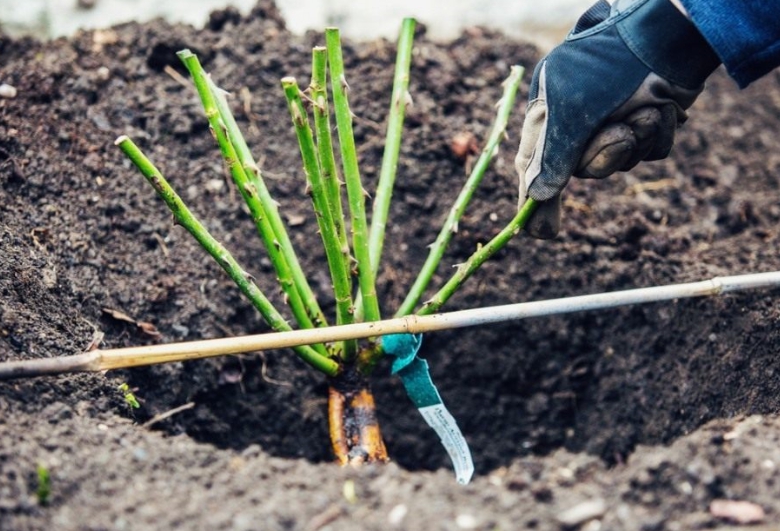
Planting a rose seedling
Plant care
To get many flowers of the Canadian Adelaide Hoodless, you need to carefully follow all the necessary care procedures.
Watering and providing moisture
Each bush needs watering during the flowering period at intervals of 2 times a week. The optimal amount of water for each rose is at least 1 bucket. Despite the fact that the rose tolerates heat well, irrigation will need to be done more often in dry weather.
Top dressing and soil quality
The soil near the seedling must be constantly loosened. Also, the rose should be fed twice:
- in the summer - with nitrogen;
- in autumn - with compositions based on potassium and phosphorus.
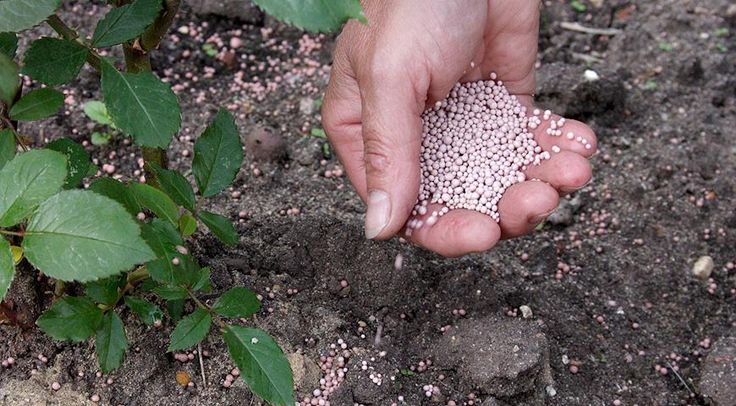
The question of feeding the bush should be kept under control.
Cropping and replanting the culture
Adelaide pruning is done for preventive purposes and to ensure proper shrub formation. Forming is required in the spring, when the rose has released its first buds. During the first year of the plant's life, the buds need to be removed, leaving only a few flowers. These actions are necessary for the culture to let all the life force on the growth of the bush. Also, do not forget about sanitary pruning in order to remove diseased and dried shoots.
You can transplant a rose 2 years after planting a seedling in the ground, not earlier.
Features of wintering a flower
Since the park variety of roses is frost-resistant, it is possible not to insulate it for the winter.
Blooming rose
During the summer period, the rose produces flowers, which may differ slightly in shade with each flowering wave.
A period of activity and rest
The first buds appear on the bush in late May - early June. This is the first and most abundant flowering wave. Towards the end of summer, the second intense wave of rose blooming comes. Between abundant flowering at the beginning and end of the period, flowers open slowly and rarely on the bush. Thus, Adelaide blooms continuously throughout the warm season.
The dormant period of the plant begins at the end of November and ends in early spring.
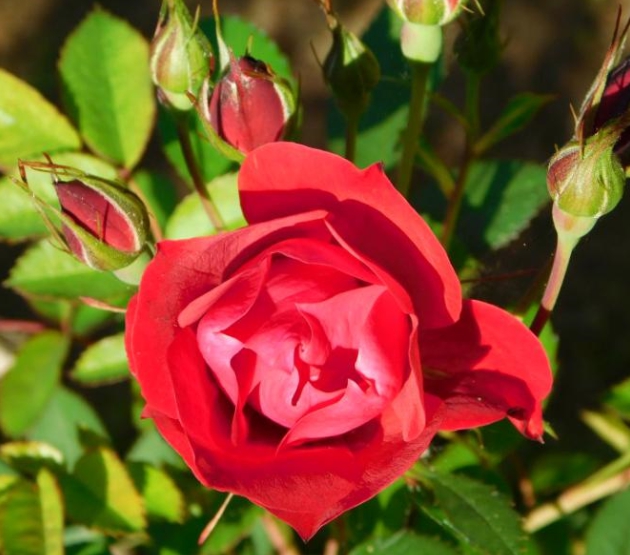
Each flowering wave of the season brings a new hue to the flowers
Care during and after flowering
In the summer, the rose needs to be fertilized with nitrogen, in the winter - with potassium and phosphorus. It is also worth constantly cutting off excess shoots, feeding the plant and processing it in order to prevent fungal diseases.
What to do if it does not bloom, possible reasons
The reason for the lack of flowers on the shrub is the unfavorable location of the plant. To solve the problem, it is worth replanting the rose in conditions more favorable for its growth.
Flower propagation
The rose is propagated by cuttings. The seed method should only be used by experienced growers.
When is it produced
Detailed description
For correct grafting, you should follow these steps:
- Cutting should be done in the morning if there is moisture on the branches. The procedure is recommended to be performed with a disinfected instrument.
- The upper and lower sections are made at a distance of 2 cm from the kidney.
- It is recommended to extract 1/3 of the leaves on the cuttings to maintain moisture.
- The stalk should be placed in water and left to root in the shade.
- When the root system appears, it is time to plant the plant in the ground.
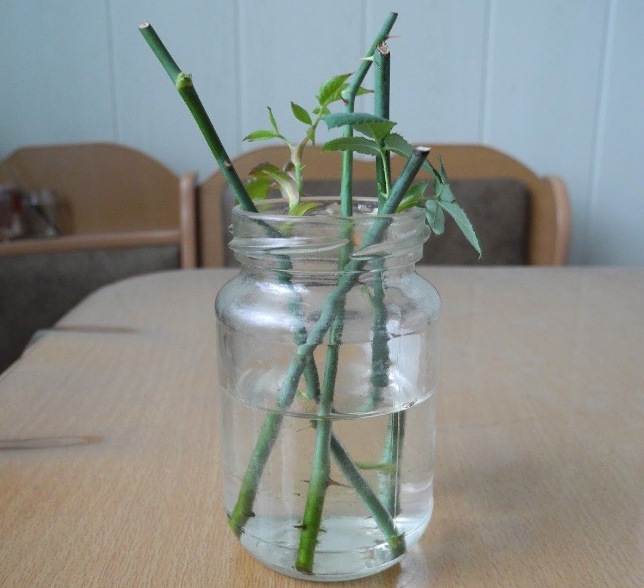
Cuttings root in water
Diseases, parasites and methods of dealing with them
According to the description of the rose variety, it is noticeable that it has a high resistance to diseases. In rare cases, when favorable climatic conditions are violated, powdery mildew and black spot may occur. Problematic areas should be cut off, the bush for treatment should be sprayed with special preparations "Fundazol", "Amistar extra". Also, in a low concentration, they should be treated with a rose to prevent the appearance of aphids, scale insects and caterpillars.
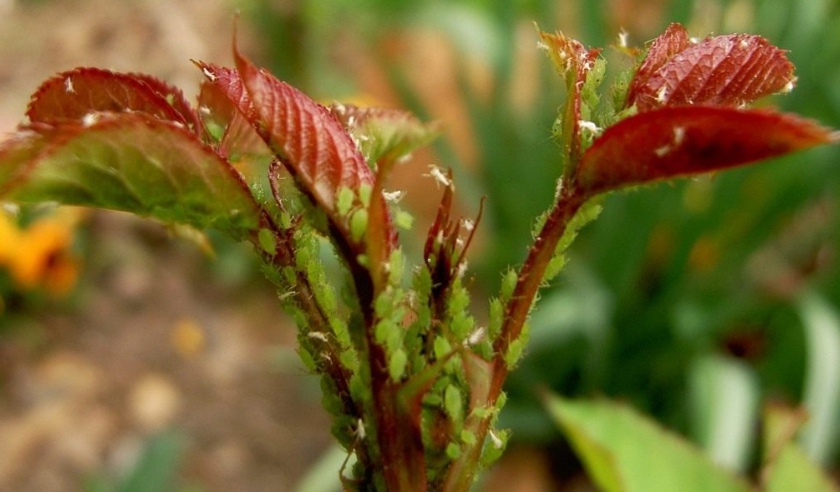
To get rid of aphids on a rose seedling, you need to treat it with a solution of laundry soap
After replenishing the home gallery with Adelaide rose, it will be impossible to exchange it later for any other variety. She can decorate the site with her lush, bright flowering, both alone and in combination with other low-growing crops.
